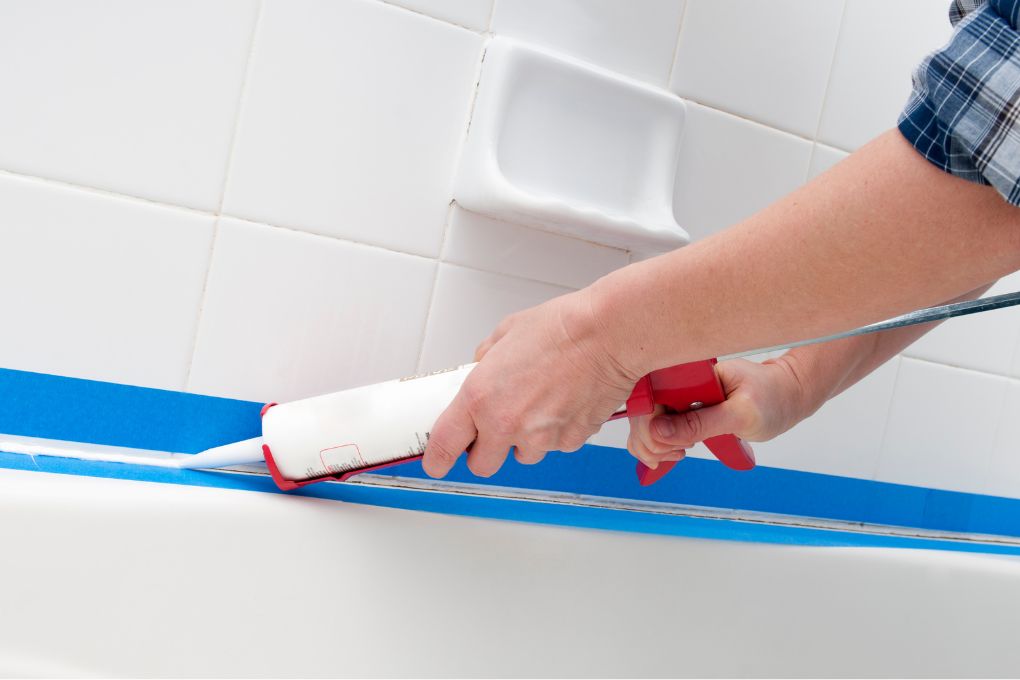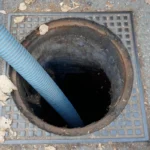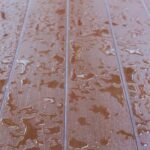Water damage in the bathroom is a common issue that can lead to expensive repairs if not appropriately managed. Water leaks or high humidity in the bathroom may damage walls, floors, and fixtures over time. Addressing these bathroom water damage issues early on is key to minimizing repair costs and preventing long-term structural problems.
Today, we will explain the common causes of bathroom water damage, outline effective prevention strategies, detail repair steps for addressing the damage, and offer guidance on when to seek professional help. Following these practical guidelines, homeowners can safeguard their bathrooms and maintain a safe, functional space while avoiding unnecessary expenses.
Signs of Water Damage in Your Bathroom
Unusual or Unpleasant Odors
A musty or damp odor in your bathroom may indicate concealed water damage lurking within the walls. These conditions create a favorable environment for mold and mildew to thrive, potentially leading to health problems if not addressed. Timely detection and remediation are essential to prevent further damage and maintain a healthy living space.
Proliferation of Mold and Mildew
The existence of mold signifies potential water damage issues and poses significant health risks. Mold spores can exacerbate respiratory problems, allergies, and other health concerns. Early detection and effective remediation are vital for maintaining a safe and healthy bathroom environment. Regular inspections and quick action are key to mitigating such risks and preserving your bathroom’s integrity.
Bathroom Ceiling Water Damage & Stained Ceiling
Water damage stemming from an upstairs bathroom can manifest as unsightly stains or discoloration on the ceiling surface. This often indicates a leak or a structural issue that requires immediate attention. If you observe any such unusual stains or notice sagging in the ceiling, it is highly advisable to seek the expertise of a professional for a comprehensive inspection. This proactive step not only helps pinpoint the source of the problem but also allows for timely remediation.
Damaged Walls
Sagging walls are an irregularity, and you should take note of signs like peeling wallpaper, bubbling paint, or areas that appear warped in your bathroom. These are often indicative of water damage. Inspect the walls for discoloration or soft spots, which can further confirm the issue. Suppose you require assistance with a drywall water restoration project. In that case, it is advisable to reach out to a professional who can address the problem efficiently and guarantee that the structural integrity of your bathroom can be restored.
Bathroom Door Water Damage
Water damage to a bathroom door can manifest as warping or swelling, causing the door to become misshapen and difficult to close properly. You may also observe peeling or bubbling paint or varnish on the door’s surface. There could be visible stains, discoloration, or even mold growth in severe cases. This type of damage affects the door’s appearance and functionality, and addressing it is essential to prevent further deterioration.
Water Damage Bathroom floor: Cracked or Stained
Excessive water exposure can significantly damage bathroom floors, leading to issues like cracks, buckling, or stubborn stains. If you detect any unusual alterations in your flooring, particularly when accompanied by unusual odors, it clearly indicates that professional intervention is necessary. Early action can prevent costly repairs and ensure a safe, dry, visually appealing bathroom space.
Common Causes of Bathroom Water Damage
Understanding the sources of water damage is the first step toward preventing it. Several factors can contribute to water damage in bathrooms. Here are the primary causes:
- Leaky Faucets and Showerheads: Even a small, constant drip from a faucet or showerhead can accumulate over time, leading to water pooling on floors and behind walls. This continuous leakage can damage fixtures and promote mold growth.
- Faulty Toilet Seals: Toilet seals can wear out or crack over time, allowing water to seep out into the flooring and surrounding area. A faulty seal wastes water and may cause hidden water damage to the subflooring.
- Inadequate Caulking: Caulking is essential for creating a watertight seal around sinks, bathtubs, and showers. When caulking deteriorates or is improperly applied, water can escape into areas behind walls or under floors.
- Misplaced or Damaged Shower Curtains: Shower curtains that do not properly contain water can splash onto the floor, increasing the risk of moisture damage. Over time, repeated splashes can damage flooring materials.
- High Humidity and Poor Ventilation: Without proper ventilation, the expected moisture levels build up, causing condensation on surfaces such as mirrors, walls, and ceilings. This moisture can lead to material deterioration and promote mold growth.
By identifying these common causes, homeowners can take proactive steps t
o reduce the risk of water damage before it escalates into a more serious issue.
Prevention Strategies
Preventing water damage in the bathroom requires regular maintenance and attention to potential problem areas. Implementing the following strategies can significantly reduce the risk of damage:
Regular Inspection of Fixtures
Preventing water damage starts with thorough checks of your fixtures. Examine faucets, showerheads, and toilets for leaks and corrosion signs; early detection minimizes repair costs and prevents further issues promptly.
Timely Replacement of Caulking
Maintaining watertight seals requires prompt caulk replacement. Inspect caulk around sinks, tubs, and showers frequently, then remove and replace damaged material immediately to ensure a secure barrier against water seepage. This prevents future damage, reduces costs, and
ensures lasting safety.
Ensuring Proper Ventilation
Optimal ventilation is essential for reducing moisture accumulation. Install an adequately sized exhaust fan, use it during and after showers, and open windows when possible. This strategy improves air circulation, lowers humidity, and helps prevent water damage and mold growth.
Using Water-Resistant Materials
Incorporate water-resistant materials to minimize moisture risks. Consider installing tiles, flooring, and paint designed for water resistance. These products resist deterioration, preserving your bathroom’s integrity and providing lasting protection.
Routine Maintenance
Consistent upkeep prevents water damage: schedule plumbing fixture checks and address leaks. Regular maintenance detects issues early, ensuring minor problems do not escalate into costly repairs that compromise bathroom safety.
Monitoring Humidity Levels
Regular humidity monitoring controls moisture buildup. Use a hygrometer to measure humidity. If levels exceed recommended limit
s, add ventilation or a dehumidifier to maintain an optimal environment and prevent water issues.
Following these steps will help prevent water damage and extend the lifespan of your bathroom fixtures and finishes. A proactive approach minimizes the need for extensive repairs later on and maintains the overall value of your home.
How to Repair Bathroom Water Damage
Even with preventive measures, water damage may sometimes occur. Prompt repair is crucial to stop further deterioration and maintain a healthy living environment. The following steps provide a clear guide to repairing bathroom water damage:
-
- Identify the Source of the Leak
Identify the leak source by checking all plumbing fixtures, including faucets, showerheads, and toilets. Determine if it is a slow drip or a major leak to guide your repair strategy effectively.
- Shut Off the Water Supply
If the leak is significant, turn off the water supply. Use the main water valve or shut off for the affected area to prevent further water damage until repairs are completed. - Dry the Affected Area Thoroughly
Remove any wet items, such as towels and rugs, and let the area air out. Use fans or dehumidifiers to accelerate drying, ensuring complete moisture removal to prevent mold growth effectively. - Assess the Extent of the Damage
Examine walls, floors, and ceilings for signs of water damage, such as discoloration, peeling paint, or warped surfaces. Assess whether minor repairs are sufficient or if extensive damage requires complete replacement. - Remove Damaged Materials
Carefully cut away damaged drywall, flooring, or trim. Take precautions not to disturb electrical wiring or plumbing during removal. Properly dispose of the damaged materials before proceeding with repairs thoroughly. - Replace with Water-Resistant Products
Install new drywall, flooring, or tiles specifically designed to resist moisture. Consider water-resistant paint and finishes for added protection. This approach ensures your bathroom remains safeguarded against future water damage. - Apply a Mold Inhibitor
After completing repairs, apply a mold inhibitor to restored areas. This step is critical to prevent mold growth, especially
in moisture-prone spaces, ensuring long-term protection and maintaining a healthy environment. - Monitor the Repaired Area
After repairs, regularly monitor the area for any recurring moisture or damage. If problems reappear, promptly re-assess the situation, and immediately address underlying issues to prevent further deterioration as needed.
Taking these steps can help restore your bathroom and prevent water damage from recurring. If you are
comfortable handling minor repairs, these guidelines can serve as a helpful roadmap. However, if the damage is extensive, professional intervention may be necessary.
When to Call a Professional for Bathroom Water Damage Restoration
If water damage is extensive or recurring, it is wise to call a professional for restoration. Homeowners can manage minor leaks, but severe damage requires expert intervention. Professionals specializing in water restoration can handle the entire process—from water extraction and drying to comprehensive repairs. They use specialized equipment to quickly remove excess water and minimize secondary damage, ensuring your bathroom is restored safely and effectively.
Although professional services may cost more than DIY repairs, the long-term benefit
s of preventing recurring damage and maintaining your home’s structural integrity are significant. Recognizing when to call experts for water restoration services can save time and money and avoid further complications.
Final Thoughts
Regular inspections, proper ventilation, and immediate leaks or faulty seal repair can avo
id bathroom water damage. Preventive measures include using water-resistant materials and addressing high humidity. If damage occurs, identify the source, shut off water, dry the area, and repair or replace affected materials.
It is best to call professional water restoration experts in severe cases or if mold is detected. These steps protect your bathroom, help avoid costly repairs, and keep your home safe and functional. Bathroom water damage? Call SS Water Restoration for fast and professional bathroom restoration services!









